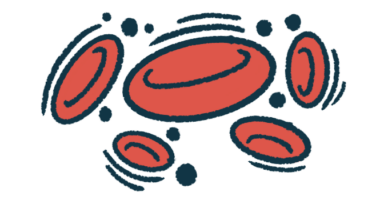How I handle hearing the phrase ‘But you don’t look sick’
Describing an invisible illness is difficult, but the spoon theory can help

Have you heard the term “invisible illness”? The Invisible Disabilities Association defines it as “a physical, mental, or neurological condition that is not visible from the outside, yet can limit or challenge a person’s movements, senses, or activities.” That includes chronic conditions such as aplastic anemia and paroxysmal nocturnal hemoglobinuria (PNH), which I have.
When I was diagnosed with both illnesses, I stepped into a world where I looked OK most days, but didn’t feel that way. As explained by others, my outside appearance was fine; I was walking, talking, and smiling, with bright eyes and a healthy-looking appearance. But that was vastly different from how I felt on the inside.
When I acknowledged how I felt, the response I usually received was, “But you don’t look sick.”
As more people found out about my diagnoses, I was told I didn’t look sick more and more. I found it hard to know what to say in response. Most times, I replied with, “Well, I don’t feel like I look.” That’s part of the battle with an invisible illness: As you describe your symptoms or inform friends and family of your illness, little of that can be visibly seen.
A helpful metaphor
I once sat in a room with patients and medical staff while we discussed living with a rare diagnosis. Among our topics was the label of our illness as invisible. As a patient told her story, she related it to the spoon theory, which tries to explain a day’s energy allocation and the risk of it running out. That’s where I learned of the theory, which is a great way to explain your invisible illness to others.
Christine Miserandino, a lupus patient, developed the spoon theory in 2003, and it’s become known as a good way to help those without an invisible illness understand what it’s like to have one. To do it, we ask them to imagine that they’re given a certain number of spoons each day, with each spoon representing the energy or capacity to perform a daily task.
For example, what if I have seven spoons, but during that day I must complete 10 tasks? After I’ve used my seven spoons, I’m left with none, which means I have no more energy to use; I’m depleted and need to recharge until the next day.
Healthy people may have a countless number of spoons each day to complete their tasks, so it takes them way longer to run out of spoons and deplete their energy than a patient battling an illness. Imagining running out of spoons can make it clear how energy exhaustion can follow, though explaining that process to a healthy person is yet another battle.
But that explanation is helpful, because it spreads awareness for others living with an invisible illness as well. Just because we don’t look sick, it doesn’t mean we don’t feel sick.
So the next time someone says, “Well, you look fine,” use the spoon theory to help them understand how you feel on the inside.
Note: PNH News is strictly a news and information website about the disease. It does not provide medical advice, diagnosis, or treatment. This content is not intended to be a substitute for professional medical advice, diagnosis, or treatment. Always seek the advice of your physician or other qualified health provider with any questions you may have regarding a medical condition. Never disregard professional medical advice or delay in seeking it because of something you have read on this website. The opinions expressed in this column are not those of PNH News or its parent company, Bionews, and are intended to spark discussion about issues pertaining to paroxysmal nocturnal hemoglobinuria.









Leave a comment
Fill in the required fields to post. Your email address will not be published.